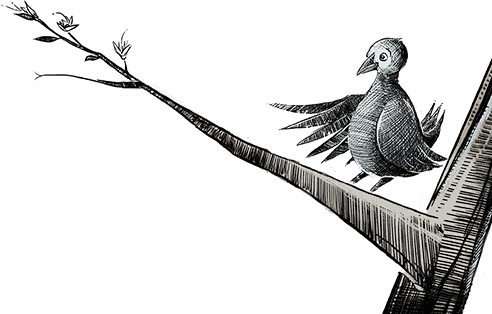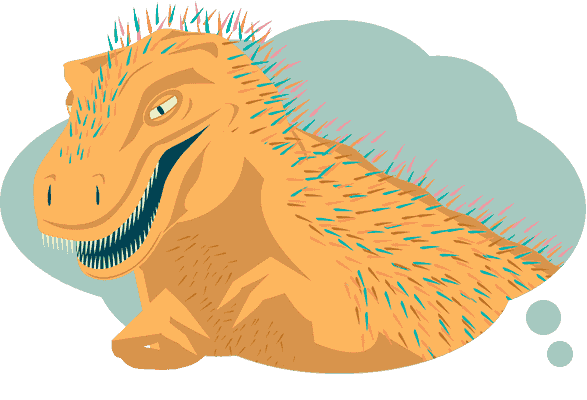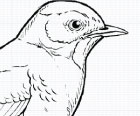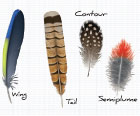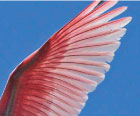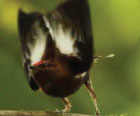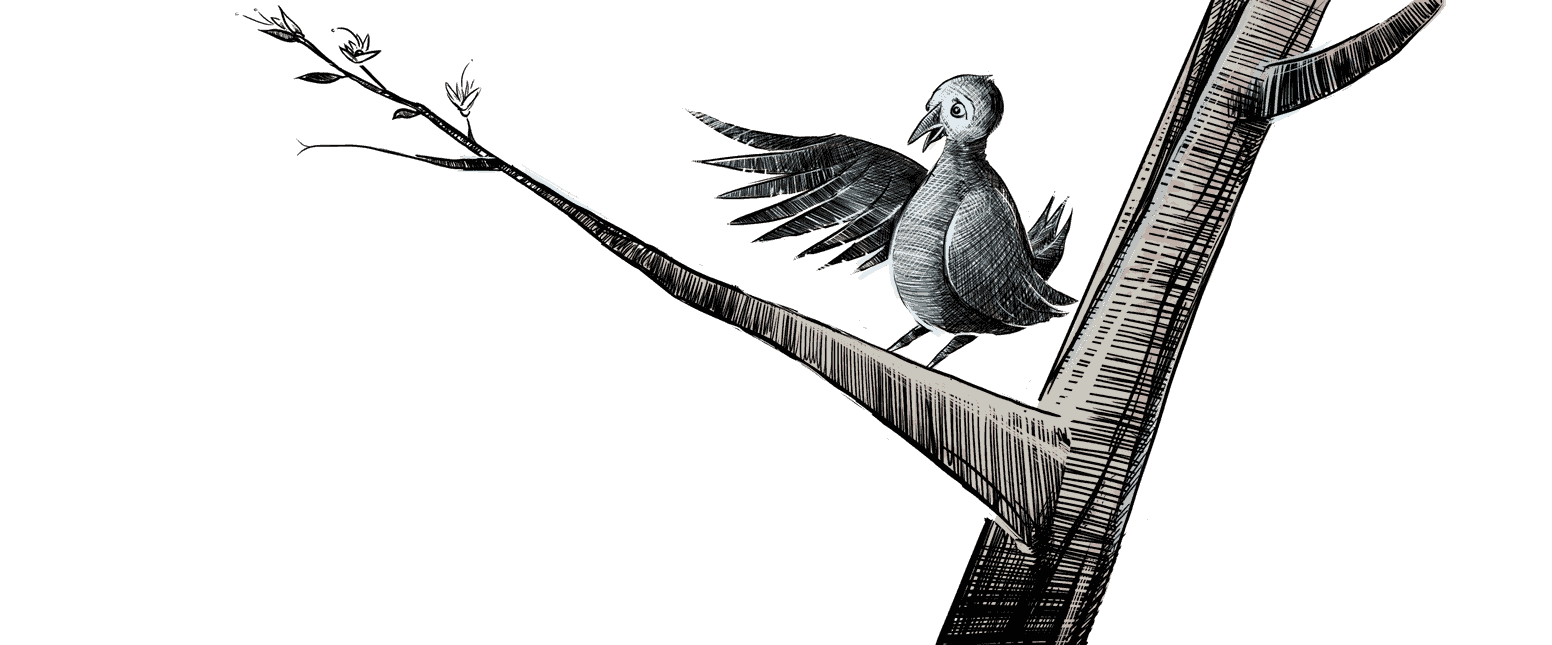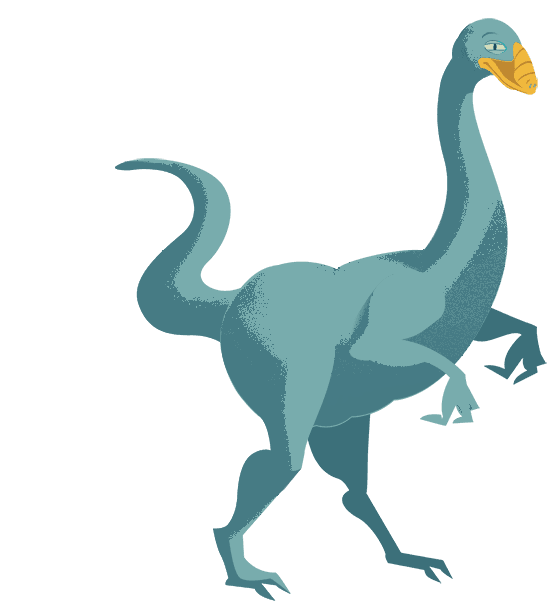Feathers Through Time
How did feathers evolve? From the fossil record, we know that birds evolved from dinosaurs, some of which had feathers. But those first feathers had nothing to do with flight—they probably helped dinosaurs show off, hide, or stay warm. Scientists recently worked out a hypothesis to explain how complex flight feathers could have evolved. They probably began as simple tufts, or so-called “dino fuzz”, and then gradually developed into interlocking structures capable of supporting flight.
Explore our interactive feather evolution cartoon to learn more about how “dino fuzz” evolved into elegant flight feathers.
Let's GoKnowing a bit about feather structure is key to understanding this section on feather evolution. Explore Section 2 of this interactive feature, How Feathers Are Built, for the details.
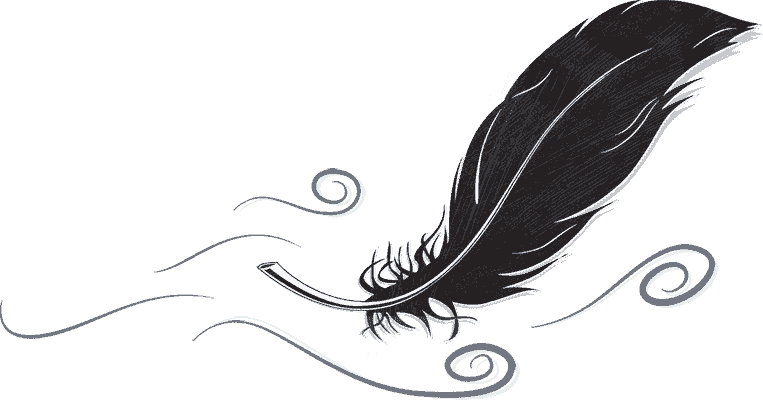
Where Did Feathers Come From?
This songbird is covered in feathers that help her stay warm and dry, to hide or show off, and to fly. But how and why did these feathers evolve? What were the first feathers like, and on what kinds of creatures did they grow?
back next page
The First Clue: Fossilized Feathers
To piece the puzzle of feather evolution together, scientists study modern feathers and fossilized traces of ancient feathers. The first major clue was Archaeopteryx, unearthed in Germany in 1861. Perhaps the most famous fossil find of all time, the Archaeopteryx specimen is 150 million years old and contains impressions of feathers that look like modern flight feathers—asymmetric in structure with interlocking branches.
back next page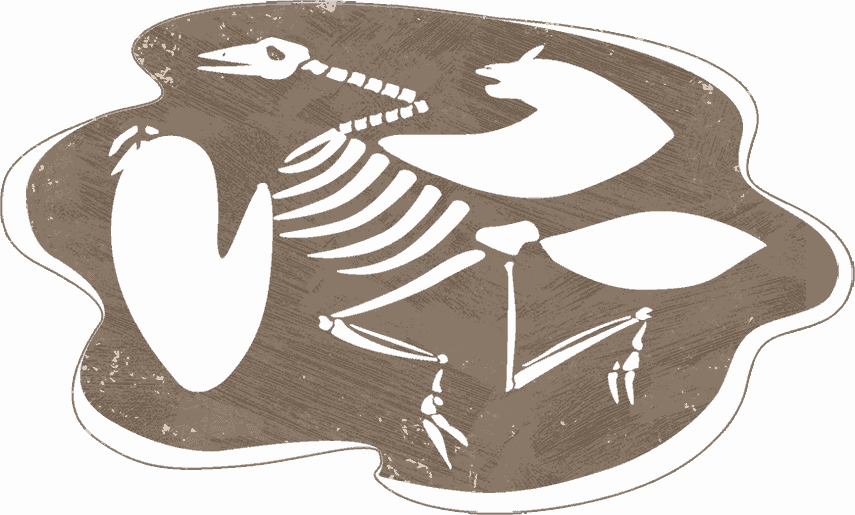
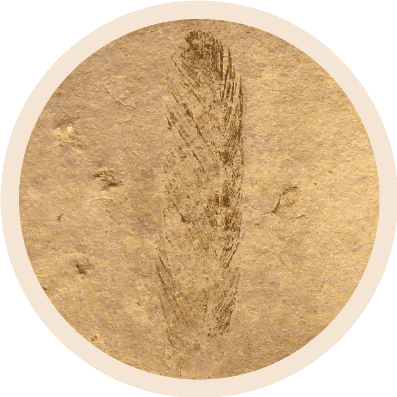
Fossilized flight feather
Archaeopteryx had wing feathers that are similar to modern flight feathers, complete with a shorter leading edge.
by: H. Raab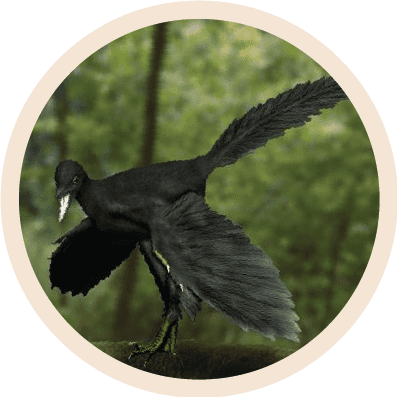
Artist's rendition of Archaeopteryx
Based on fossil evidence, this likely what a live Archaeopteryx looked like.
by Nobu Tamara
Clues from Feather Growth
Biologists reasoned that the Archaeopteryx specimens were not the first feathers—there must have been a series of simpler feathers that preceded full-blown flight feathers. Evolutionary biologists often look to a structure’s growth pattern for clues to its evolutionary past. Watch the growth process and set yourself up for understanding the innovations that occurred during the evolution of flight feathers.
• Tubular sheath forms
• Branches begin forming
• Branches fuse into central shaft
• Sheath disintegrates
• Feather unfurls

The Evolution of Flight Feathers
Careful study of feather growth inspired scientists to propose the following evolutionary hypothesis. Stage 1: The first feathers were flexible hollow tubes.
back next page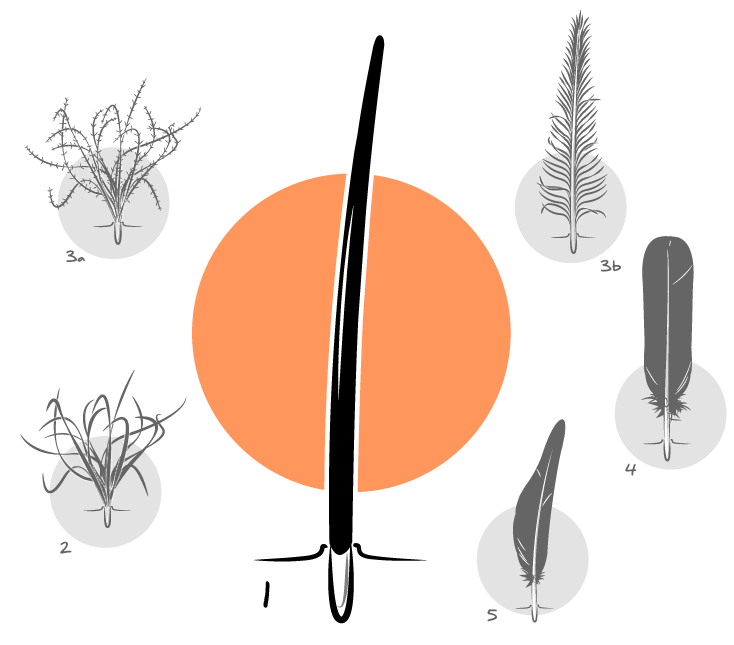

The Evolution of Flight Feathers
Stage 2: These simplest feathers then evolved into clusters of hollow tubes, or barbs. Structurally, this stage is similar to the point early in the growth process when the barbs have formed but before they start to fuse into a central shaft.
back next page

The Evolution of Flight Feathers
Stage 3a and b: Then side branches, or barbules, developed and bases of the barbs fused together into a central shaft, or rachis. We don’t know which of these innovations came first, but both features were necessary in the evolution of the modern flight feather.
back next page

The Evolution of Flight Feathers
Stage 4: The next innovation was the development of small hooks on the barbules that interlock like Velcro to create a smooth surface, or vane, on either side of the central shaft.
back next page

The Evolution of Flight Feathers
Stage 5: And finally, feathers evolved asymmetric vanes that support flight by creating a strong leading wing edge. This type of feather was already evident on Archaeopteryx and is what we find on the wings of most modern birds.
back next page

Dino Fuzz
Evidence supporting this evolutionary hypothesis has been mounting. In the past 15 years a series of feather traces have been discovered on dinosaur fossils from the Yixian formation in China and in amber from western Canada. We don't think of dinosaurs as being covered in feathers, but dozens of theropod dinosaurs had simple stage 1 and 2 feathers. The scientific community has dubbed these feathers “dino fuzz” and it is likely that some ferocious tyrannosaurs were covered in fuzz—perhaps as an insulating layer.
back next page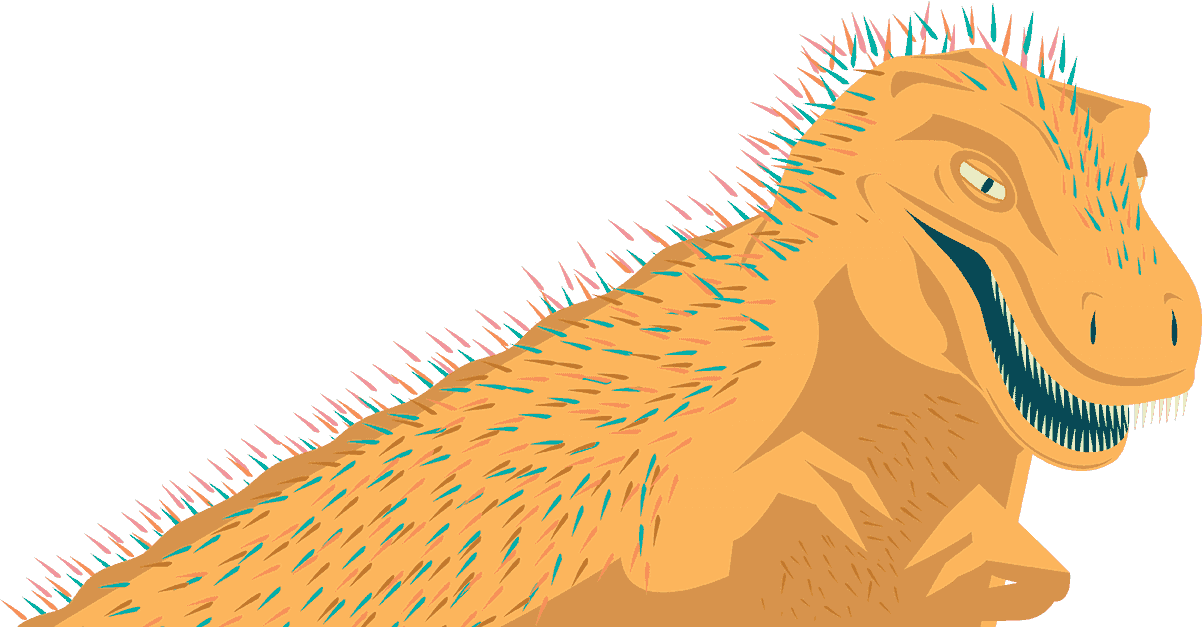

Displaying Dinos
Some theropod dinosaurs had more than simple fuzz and were adorned with feathers from later evolutionary stages. Ornithomimus for example had large feathers anchored to wing like appendages. But since they only grew on the massive adults, these feathers were likely used for display rather than flight.
back next page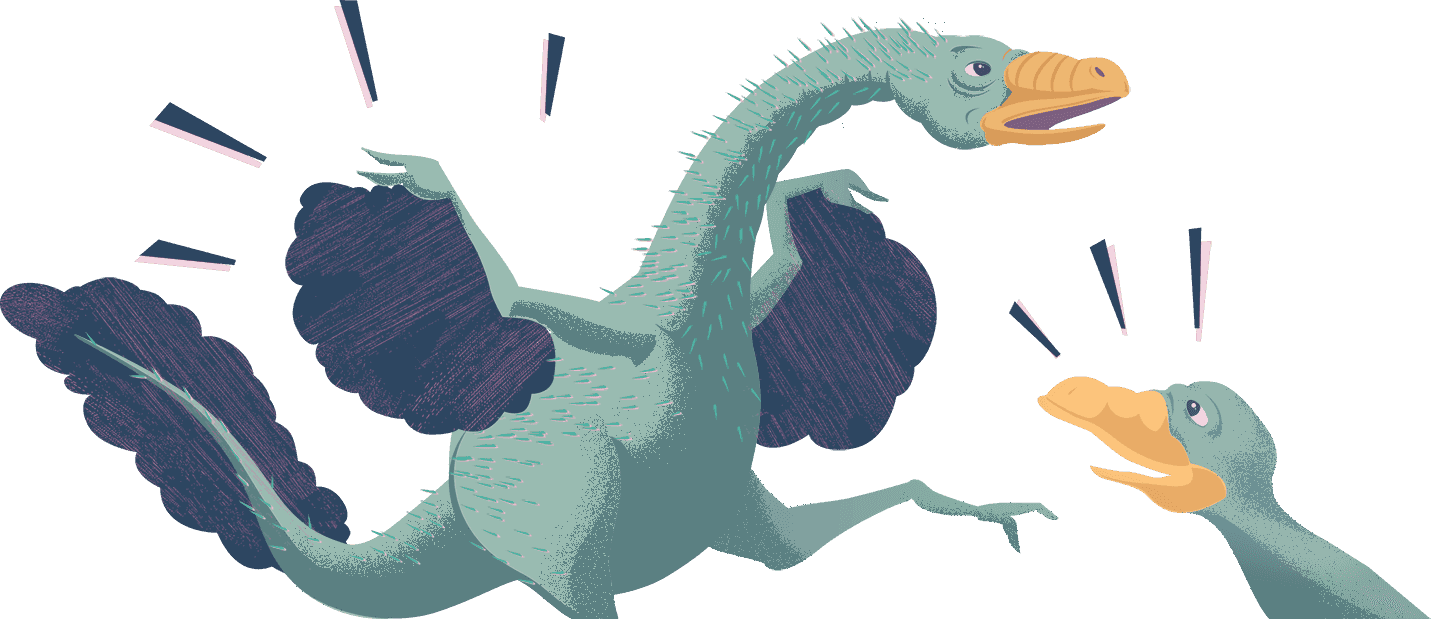

Early Feather Functions
In recent years, fossils matching all of the proposed stages of feather evolution have been discovered. What‘s clear is that early feathers were not capable of supporting flight. Whether used for camouflage, insulation or display, ancient feathers evolved through a series of innovations to form the modern flight feather whose evolutionary legacy is etched in its growth process.
back next page
Feathers Evolved First on Dinosaurs
So when admiring the plumage on a modern songbird, just remember those feathers began as humble “dino fuzz”.
back